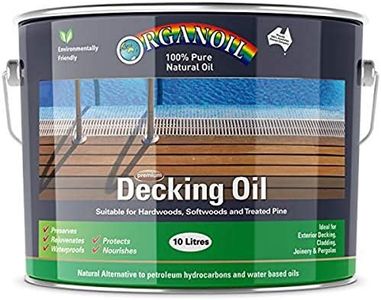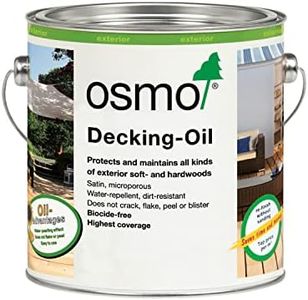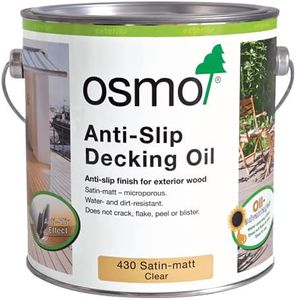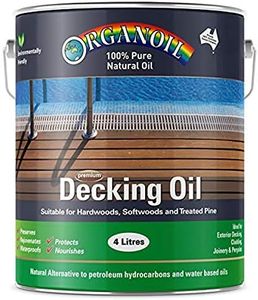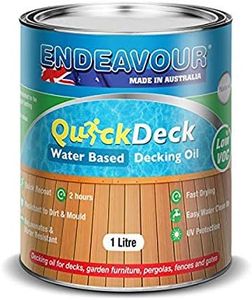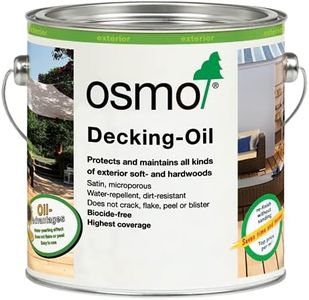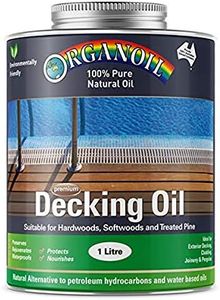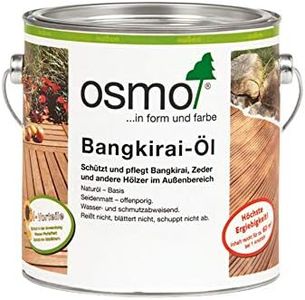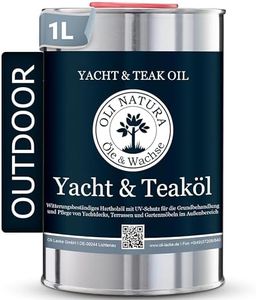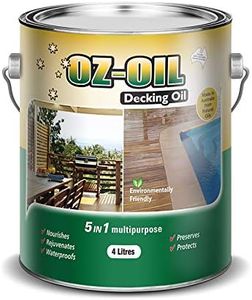We Use CookiesWe use cookies to enhance the security, performance,
functionality and for analytical and promotional activities. By continuing to browse this site you
are agreeing to our privacy policy
10 Best Decking Oils
From leading brands and best sellers available on the web.Buying Guide for the Best Decking Oils
Choosing the right decking oil is essential to keep your deck looking good and lasting longer. Decking oils protect the wood from sun damage, moisture, and general wear, while also enhancing its natural color. Different oils work better for various wood types and usage situations, so it's important to understand their key characteristics before buying. Focus on how your deck is used, its exposure to the elements, and the finish you want before picking an oil.Base Type (Water-Based vs. Solvent-Based)Decking oils generally come as either water-based or solvent-based types. Water-based oils dry faster, have less odor, and are easier to clean up. They're great if you're looking for a more environmentally-friendly option and need the area back in use quickly. Solvent-based oils tend to provide deeper penetration and longer-lasting protection, especially on older or weathered wood, but they take longer to dry and often smell more. Think about the environment and how quickly you want to finish the job to choose which base is right for you.
UV ProtectionUV protection in decking oil refers to how well it shields the wood from the sun's ultraviolet rays, which can fade and weaken timber over time. Advanced UV protection is especially important for decks that get a lot of direct sunlight. Oils with higher UV blockers keep the wood's color and structure better, while products with minimal UV additives may leave the deck exposed to sun-fading. Consider how sunny your deck’s location is and choose a level of UV protection that matches.
Finish (Matte, Satin, or Glossy)The finish describes the final look and feel of the deck surface after the oil is applied. Matte finishes give a more natural, understated appearance, while satin provides a gentle sheen that enhances wood grain subtly. Glossy finishes create a shiny look and can highlight colors but may become slippery when wet. Your personal taste and how you use the deck—such as whether it’s a high-traffic space—can help decide which finish fits best.
Coverage and ApplicationCoverage refers to how much surface area a certain quantity of oil can treat. Some oils can stretch further, saving application time and effort. The ease of application is also important—some products are easier to brush or roll on, while others require more careful work. If you have a large deck or want a quick job, look for oils with higher coverage rates and easy application instructions. For detailed or complex deck designs, oils that are more forgiving during application may be preferable.
Water ResistanceThis spec tells you how well the oil repels water and prevents moisture from soaking into the wood. Good water resistance is crucial for decks in rainy or humid areas, helping to prevent swelling, warping, or rot. If your deck is uncovered or exposed to the elements, prioritize a decking oil with strong water-repelling properties. For more sheltered decks, a moderate level may be enough.
Color Enhancement or TintSome decking oils are clear to show off the wood’s natural tone, while others contain tints to enrich or alter the color. Tinted oils can emphasize certain wood colors, add warmth, or even completely change the appearance. They also often boost UV protection. If you want to keep the natural look, go clear; if you wish to boost or adjust the color, consider a tinted oil. Your taste and your deck’s current look will guide you here.
